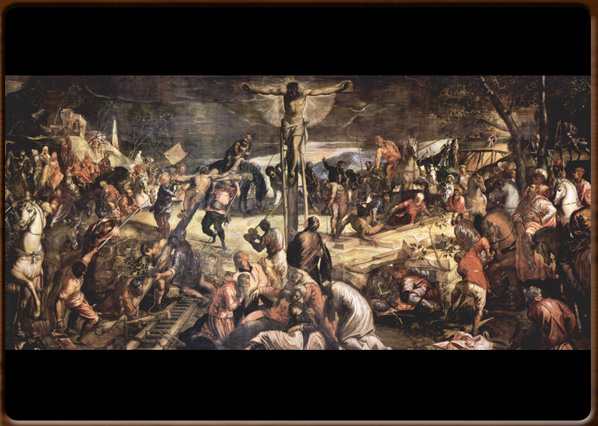
The wedding of Cana. Tintoretto, 1561, S. Maria della Salute, Venice.

The Crucifixion. Tintoretto, 1565, Scuola Grande di San Rocco, Venice.


No video
Jacopo Robusti, known as “Tintoretto” (1518-1594), was a painter who always lived and worked in Venice.
His first known contribution to Venetian painting was to add the aesthetic style of the Tuscan, Roman and Emilian Mannerists. He was particularly interested in light, as a way to give body to his scenes or visions in order to get across their intense dramatic spirituality. This can be seen in his "Last Supper" (1547, Church of S. Marcuola), "Miracle of St. Mark" (1548, Gallerie dell’Accademia) and the paintings in Madonna dell'Orto.
When it came to portraits, Tintoretto focussed on the intimate thoughts of his subjects: "Portrait of the Soranzo Family" (1550, Castello Sforzesco, Milan), "Portrait of a Gentleman with a Gold Chain" (1556-60, Museo Nacional del Prado, Madrid), "Doge Alvise Morosini" (1570, Gallerie dell’Accademia). He worked on the Scuola Grande di San Rocco from 1564 to 1587, painting some fifty large canvases (teleri), including the cycle of the "Stories from the Old and New Testaments", perhaps the most complete and exhaustive cycle in Christian art.
The most important of his latest works are his Paradise (1588-92, the Doge’s Palace in Venice) and another Last Supper (1592-94, Basilica of San Giorgio Maggiore).
Tintoretto’s son, Domenico (Venice 1560-1635), was his pupil and assistant.
1500 - - rev. 0.1.7